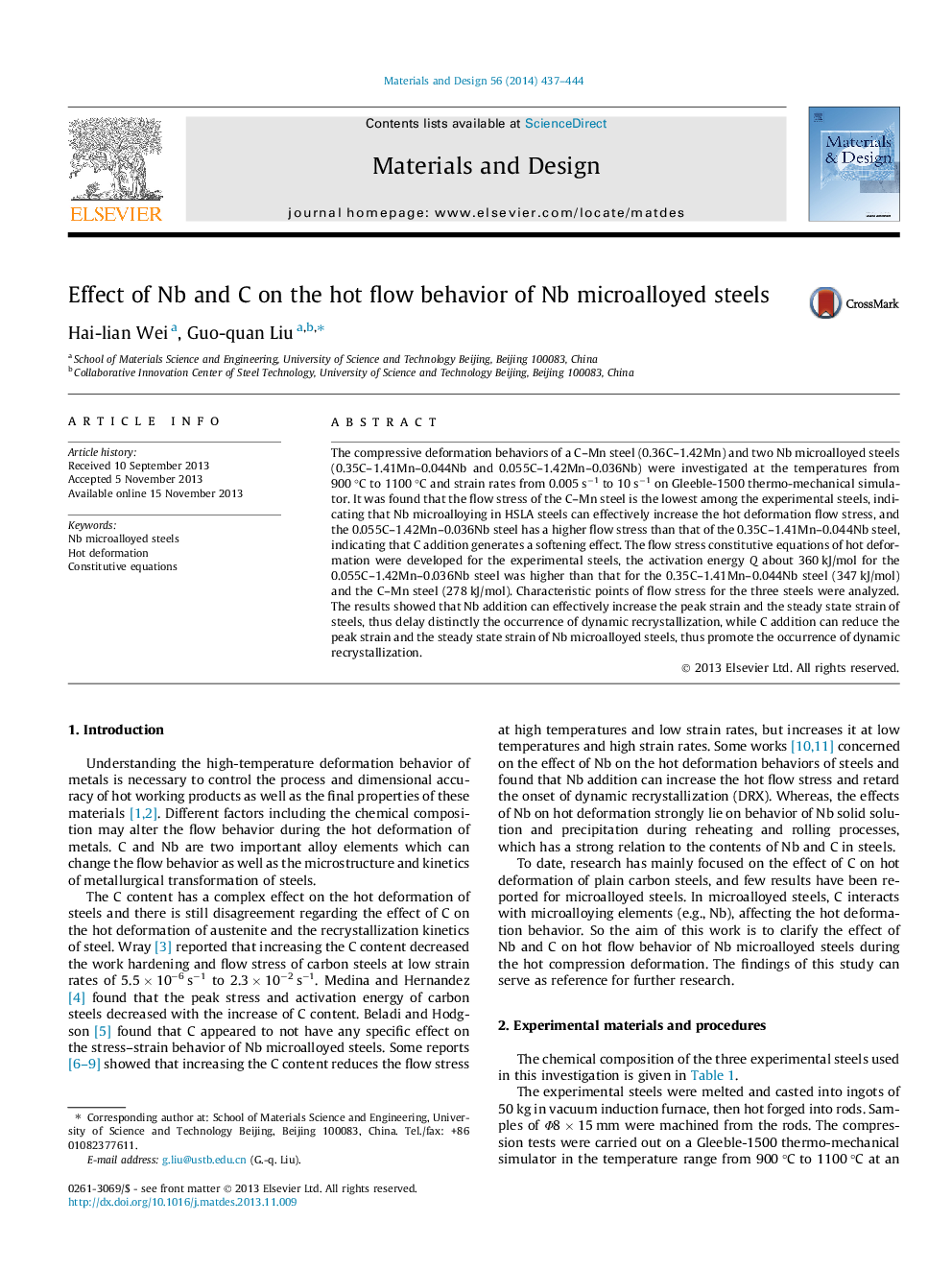| Article ID | Journal | Published Year | Pages | File Type |
|---|---|---|---|---|
| 829461 | Materials & Design (1980-2015) | 2014 | 8 Pages |
•The effects of Nb and C on hot flow behavior of Nb microalloyed steels were investigated.•Nb addition increases the hot deformation flow stress while C addition generates a softening effect.•Nb addition increases the hot deformation activation energy while C addition reduces the hot deformation activation energy.•Nb addition increases the characteristic strains while C addition reduces the characteristic strains.
The compressive deformation behaviors of a C–Mn steel (0.36C–1.42Mn) and two Nb microalloyed steels (0.35C–1.41Mn–0.044Nb and 0.055C–1.42Mn–0.036Nb) were investigated at the temperatures from 900 °C to 1100 °C and strain rates from 0.005 s−1 to 10 s−1 on Gleeble-1500 thermo-mechanical simulator. It was found that the flow stress of the C–Mn steel is the lowest among the experimental steels, indicating that Nb microalloying in HSLA steels can effectively increase the hot deformation flow stress, and the 0.055C–1.42Mn–0.036Nb steel has a higher flow stress than that of the 0.35C–1.41Mn–0.044Nb steel, indicating that C addition generates a softening effect. The flow stress constitutive equations of hot deformation were developed for the experimental steels, the activation energy Q about 360 kJ/mol for the 0.055C–1.42Mn–0.036Nb steel was higher than that for the 0.35C–1.41Mn–0.044Nb steel (347 kJ/mol) and the C–Mn steel (278 kJ/mol). Characteristic points of flow stress for the three steels were analyzed. The results showed that Nb addition can effectively increase the peak strain and the steady state strain of steels, thus delay distinctly the occurrence of dynamic recrystallization, while C addition can reduce the peak strain and the steady state strain of Nb microalloyed steels, thus promote the occurrence of dynamic recrystallization.
